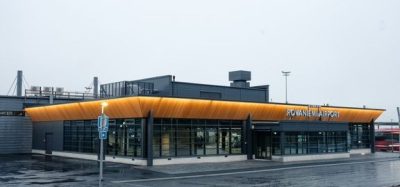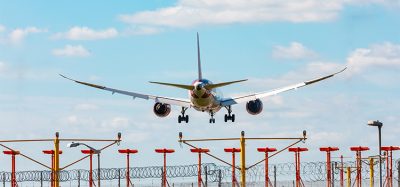Ten years of RVSM
Posted: 29 March 2012 | Joe Sultana, Chief Operating Officer, Directorate Network Management, EUROCONTROL | No comments yet
On 24 January 2002 at 01.00 UTC, the Reduced Vertical Separation Minimum (RVSM) programme went live. At one stroke past, 6,000 air traffic controllers in 41 European states allocated aircraft to six new flight levels. Capacity gains of 25 per cent were made between 2002 and 2007.
It was the biggest, most important project Europe had ever seen – and the first one to be implemented right across the continent, from North Africa to the Arctic. The programme increased capacity in the airspace of 41 states by providing six extra flight levels between 29,000 and 41,000 feet, bringing the total number of flight levels to 13.
By reducing the number of aircraft sharing a given flight level, this change not only enhanced safety by allowing more aircraft to operate at their preferred flight levels, it also underpinned better en-route performance, reduced delays, lowered fuel consumption and boosted capacity. The average yearly cost benefits for aircraft operators were estimated at around €3.9 billion; savings derived from reductions in delay and fuel consumption. Europe’s upper airspace capacity grew by up to 25 per cent, helping airlines and other airspace users meet rising demand more effectively and simultaneously make substantial fuel savings.
On 24 January 2002 at 01.00 UTC, the Reduced Vertical Separation Minimum (RVSM) programme went live. At one stroke past, 6,000 air traffic controllers in 41 European states allocated aircraft to six new flight levels. Capacity gains of 25 per cent were made between 2002 and 2007.
It was the biggest, most important project Europe had ever seen – and the first one to be implemented right across the continent, from North Africa to the Arctic. The programme increased capacity in the airspace of 41 states by providing six extra flight levels between 29,000 and 41,000 feet, bringing the total number of flight levels to 13.
By reducing the number of aircraft sharing a given flight level, this change not only enhanced safety by allowing more aircraft to operate at their preferred flight levels, it also underpinned better en-route performance, reduced delays, lowered fuel consumption and boosted capacity. The average yearly cost benefits for aircraft operators were estimated at around €3.9 billion; savings derived from reductions in delay and fuel consumption. Europe’s upper airspace capacity grew by up to 25 per cent, helping airlines and other airspace users meet rising demand more effectively and simultaneously make substantial fuel savings.
Join us live: Shaping the Next Generation of Hold Baggage and Air Cargo Screening
Join us live for an insightful webinar on 11th December at 14:00 GMT, in collaboration with Smiths Detection, as we explore the strategic balance of operational efficiency, regulatory compliance, and sustainability in high-volume security environments.
This session offers a focused look into future-proofing your security strategy.
Key learning points
- Cost Reduction: Strategies to minimize bag travel time while simultaneously reducing operational costs.
- Regulatory Roadmap: Insights into the next wave of regulatory changes and their impact on future investment decisions.
- Sustainable Systems: Practical approaches to building sustainability into security systems and lowering the total cost of ownership (TCO).
- Scalable Solutions: Real-world examples of scalable systems supporting current airport growth and preparing for tomorrow.
Register now for expert insights, case studies, and actionable strategies on operational efficiency!
Following the implementation of RVSM in the EUR RVSM airspace, EUROCONTROL’s Experimental Centre near Paris did more analysis, focusing on the environmental aspects. It concluded that the implementation had delivered significant environmental benefits. In total, NOx emissions were reduced by between 0.7 and 1 per cent, representing approximately 3,500 tonnes less NOx per year, as well as 260 tonnes less sulphur dioxide each year, all thanks to RVSM.
RVSM was first introduced over the North Atlantic and then in Europe’s busy continental airspace. North America and other regions followed suit in introducing RVSM and the last regional implementation took place on 17 November 2011 in the Russian Federation and other Eurasian states.
RVSM laid the foundations of today’s Network Manager: it was the first real pan-European project and it had to be applied right across the continent, collaboratively and simultaneously.
We knew that the benefits would only be significant if implemented across the whole of Europe; it could not be done piecemeal. We could not have some areas applying it and not others.
We had to work very closely together to make it happen. The potential benefits were huge, but so were the risks: a failure in one place could mean the collapse of the whole project. The electronic switchover from national currencies to the Euro had happened just one year earlier, on 1 January 2001 (notes and coins were introduced a year later), and this made for an interesting parallel. All states had to be ready at the same time and there could be no exceptions, not for the Euro and not for RVSM.
We were playing for high stakes: we knew that the gains were going to be considerable but the risks were daunting. Still, the risks were calculated ones. We were determined to succeed.
The decades before
In the 1980s and 1990s, work focused on using altimetry systems to ensure that aircraft height-keeping performance above 29,000 feet was reliable enough for reduced vertical separation. This was global work, conducted under the ICAO umbrella. It led to the implementation of the world’s first RVSM airspace, between FL 330 and FL 370 over the North Atlantic on 27 March 1997.
Since the early 1990s, EUROCONTROL had been involved in the RVSM technical evaluation process, collecting data, making safety assessments and developing a prototype height-monitoring unit.
But it dawned on us that mere height-keeping was not enough. There were many ATM-related elements to address as well. ATS providers, controllers, aircraft operating in complex and busy airspace needed to be involved, too. Transition to non-RVSM airspace had to be considered – and the problem of transferring aircraft from metric airspace to the imperial system in Western Europe had to be addressed, as well. In short, it meant that the whole European aviation community had to work together.
The challenges
Progress was not uniformly smooth. The initial project had to be reassessed in light of states’ concerns and a major review led to the establishment of a standalone RVSM Programme with dedicated project management, clear leadership and an RVSM Master Plan approved by 40 participating states, airspace users – controllers and pilots – and international organisations.
It was a mix of contracted programme management and support, our own expertise at EUROCONTROL, the right balance of oversight, direction, delegation and the freedom to improvise which helped make it all happen. We did not go it alone: National Programme Managers were present in each state: it was a pleasure to work closely with those dedicated professionals. They were major contributors to the programme’s overall success.
Together, we produced a long list of deliverables. One, the ATC Manual for RVSM proved to be a pivotal document as it detailed changes to ATC procedures, phraseology and system modifications.
The biggest challenge in 1999 and 2000 was the development, installation and operation of the height-monitoring infrastructure. At first, we were tempted to contract out the work, but we felt that we could not rest easy if we were dependent on a single contractor for this vital component. So, we sub-contracted different parts of the work to various companies and we integrated all the pieces, honing the communications between the sites and the monitoring cell at our Experimental Centre in Brétigny.
There were lots of issues to overcome – both technical and procedural – but we managed to get on top of them. Until we realised: we were ready, but most aircraft were not! Aircraft then had to be modified to global RVSM standards to be eligible for monitoring. Only a small number of aircraft were ready in 2000. So, we launched an all-out effort to convince aircraft operators to spend the retrofit money in advance of the start date: pay now for benefits in over 15 months’ time was a difficult message to sell.
The User Support Cell subsequently worked extremely hard to make sure that by June 2001, 85 per cent of aircraft were RVSM compliant. They contacted thousands of operators, explained the requirements, the certificates needed, updated the RVSM database. The list of tasks was endless but theirs was a major achievement.
The next biggest challenge was the safety case. We knew what our safety targets were, but we had no experience to learn from and no reliable road map. We worked on a Collision Risk Model and Functional Hazard Analysis, linking the findings together and with our colleagues in the Safety Regulation Unit, were able to draw up a safety case that was thoroughly assessed from every angle.
In fact, safety was the single most important feature: it was imperative to ensure that RVSM activities did not infringe in the least on Europe’s stringent safety levels. Much to our satisfaction, safety was indeed maintained.
Feeling that we should be able to meet the target date of 24 January 2002, we compiled a Go-Decision Recommendation Document that gave every imaginable detail on how to proceed with the Master Plan. Once again, this was the result of excellent co-operation between the National RVSM Programme Managers and ourselves. Together, we created a plan of action that connected Europe-wide co-ordinated activities with national plans. It was the first time that anything like it had been done on such a scale.
The next step was a searching review process. We used a progress-tracking mechanism to produce, state by state, a progress report and risk review, noting all the concerns and providing contingency procedures and plans to mitigate identified risks. Aircraft operator associations were most helpful in contributing to the accuracy and credibility of the data.
Naturally, aircraft operators are not the only airspace users. We also had to involve the military. The body at the time, the Civil/Military Interface Standing Committee, reviewed our work and provided recommendations for operating military aircraft in RVSM airspace.
Air forces responded well, making sure that their transport fleet were RVSM-compliant. NATO obligingly undertook not to schedule any largescale exercises between January and March 2002 to smooth the introduction of RVSM.
D-Day
In the end, it was all down to the controllers, and at 00.01 UTC on 24 January, 6,000 air traffic controllers in 41 states allocated aircraft to six new flight levels.
Together, we had created a sky with fewer operational barriers and one with significant improvements. I find it amusing now when younger controllers, who never worked with the old system, ask; “How on earth did you manage the traffic before with so few flight levels?”
I wish that we could find another RVSM project today: a simple, clear idea that brings so much benefit. Still, I’m lucky to have had the chance to work on that very successful project. The reason behind the success: the intense collaborative effort made by everyone involved, right across the board.
Looking back at it now, it was a fundamental improvement in the use of European airspace. It gave practical and tangible meaning to the collective wish of the European aviation community to work together for the benefit of the travelling public.
Most importantly, RVSM paved the way for the Network Manager role and I am glad to have been in on the ground floor of working on a project with a network perspective.
About the author
Joe Sultana is Chief Operating Officer of the Network Management Directorate. He graduated with an Engineering Degree from the University of Malta in 1975 and joined the Air Traffic Services Unit in Malta in the same year. He obtained ATCO licenses in Aerodrome, Radar and Area Control and was a Watch Supervisor for four years. In 1982, he was appointed Head of Air Traffic Services in the Maltese Department of Civil Aviation.
Join our free webinar: Beyond silos: How ecosystem thinking elevates the airport experience
In today’s complex aviation landscape, airports are moving beyond siloed operations to embrace a new era of collaboration. This webinar focuses on how leading airports are using ecosystem thinking to adapt, personalize, and continuously improve every touchpoint, boosting both passenger satisfaction and non-aeronautical revenue.
Date: 13 Nov | Time: 10:00 GMT
REGISTER NOW TO SECURE YOUR SPOT
Can’t attend live? No worries – register to receive the recording post-event.
Issue
Related topics
Air traffic control/management (ATC/ATM), Airside operations


















